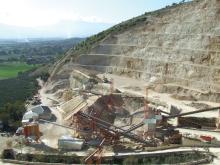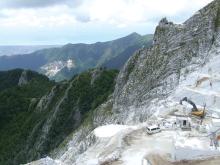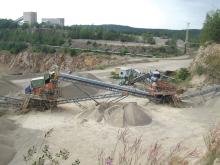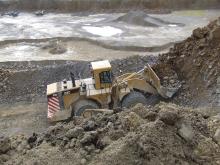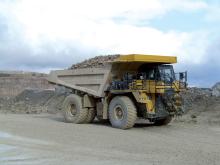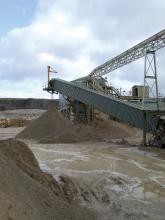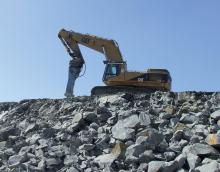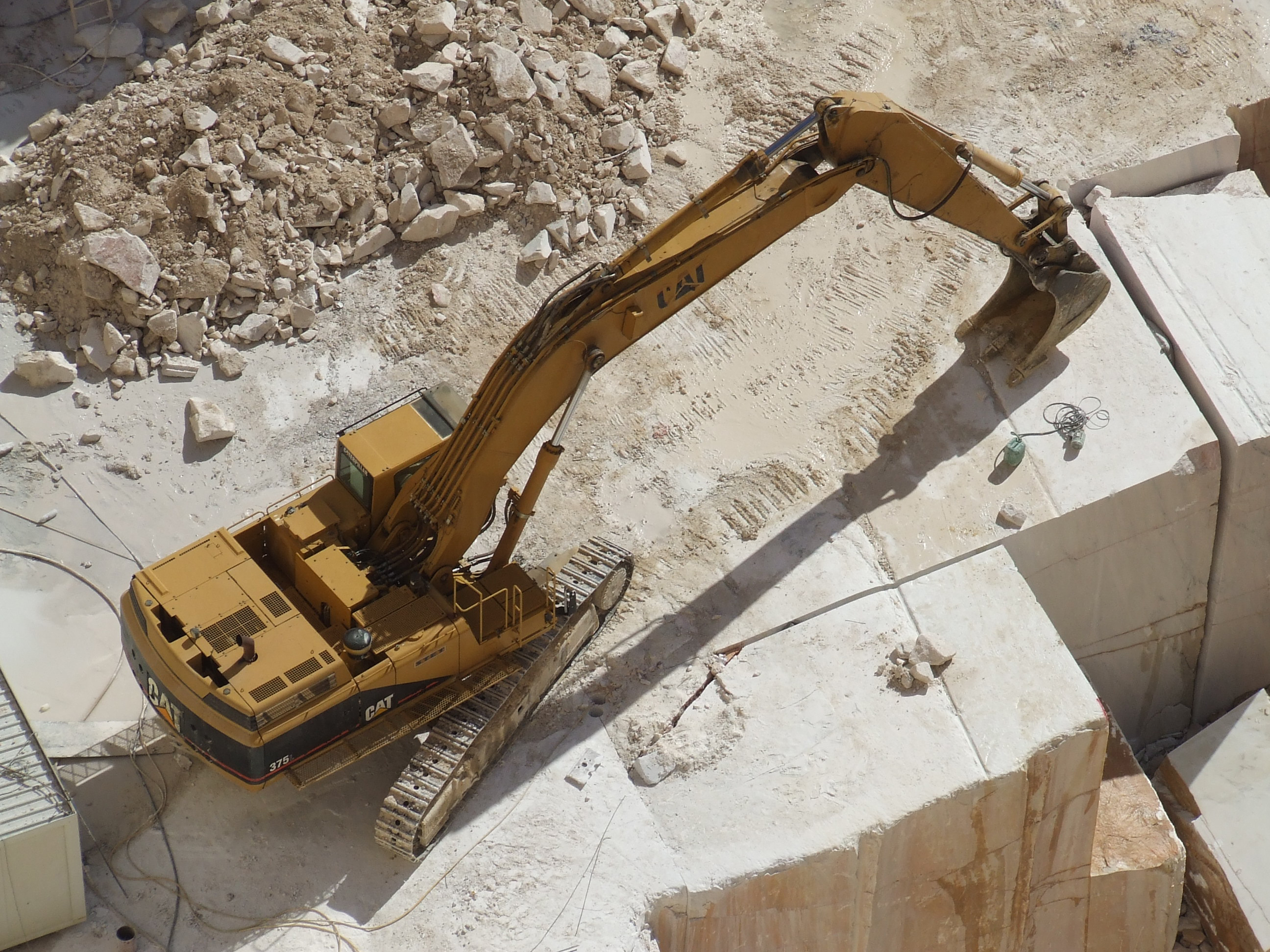
While demand for construction aggregates has been affected by the global recession, the call for marble appears to be unabated. Claire Symes visited a Portuguese marble quarry to find out more
Some of Europe's most prestigious hotels, museums, churches and piazzas owe some of their magnificence to the marble that lines the floors and walls of these structures. And it is demand for these materials for contemporary construction that is helping to maintain this market at a time when there is a slowdown in the call for conventional construction aggregates.
One quarry that is seeing this demand in its order book is Ezequiel Francisco Alves's site in Vila Viçosa, Portugal. The company has not only recently invested in new machines to meet rising production but is also in the final stages of adding a third quarry to its portfolio.
The quarry, which about 40km from the Spanish border, was started in 1974 and acquired from the original owner by the eponymous Ezequiel Francisco Alves in 1990. Today the quarry is managed by his son Antonio Manuel Alves, who has run the site since his father bought the business but his father is still involved in the overall management of the operation.
Two generations of the Alves family have been involved in the marble quarrying business in the region but Alves's father wanted to run his own rather than working in someone else's.
"The company bought its second quarry in 2002 and is currently in the process of opening a third site close to the location of our first quarry," explained Alves. "We also have a warehouse near Lisbon." The marble the quarry extracts, which is cut in a nearby yard also owned by the company, is much sought after due to its pink and white colouration.
However, only 15% of the material extracted ends up as blocks. Waste material is taken away for use as aggregates or for backfill in the restoration of other marble quarries in the region. The high level of wastage is due to the sand veins and fractures that run through the deposit.
Market
The Portuguese construction industry has long been in recession but Ezequiel Francisco Alves has recently invested in several new machines, which indicates how the marble sector has continued to prosper in a way traditional aggregates have not.
Whereas many normal aggregates are transported over a maximum distance of 50km, limited by the low cost of the material and high cost of transport, marble is in demand all over the world.
On average much of the material - around 40% - from Ezequiel Francisco Alves is sold to Arabic countries, while 20% is sold to Italy and another 20% stays in Portugal. Alves sells the material directly to the importers and his company exhibits at three international marble shows each year to find this business.
The marble is sold for €150 to €1000 per tonne depending on the size and quality, but Alves said about only 1% of production reaches the €1000 per tonne price tag - the average is €300 per tonne.
The company's recently acquired new Cat 345 excavators, which Alves said will extend the quarry over the next 10 years, are already hard at work in the quarry. "We have not really been impacted by the global recession," said Alves. "We had a slowdown of about 50% for four months between December 2008 and March last year but since then business has been normal.
"I invested in the new
Unlike other marble quarries in Europe, Alves' quarry - like most in the Estremoz region - uses excavators to pick out and manoeuvre the marble blocks rather than using wheeled loaders.
"There are many skilled excavator operators in the region but very few who can operate a wheeled loader to the same level," he said. "The other issue here is the lack of working space and steep haul roads that mean excavators are more practical." At the Ezequiel Francisco Alves the blocks are moved by excavators and then cut into smaller blocks before being winched up to ground level by crane, rather than being transported by wheeled loaders as other marble quarries tend to do.
Alves has equipped his new 345s with quick couplers to allow them to switch quickly from a ripper - to pull the block out of the face - to a bucket for moving the block onto the quarry floor for further cutting.
"Another big factor in our machine choice is that of price - excavators and cranes are capable of doing the work and are cheaper than wheeled loaders," said Alves.
"The quarry is currently 85m deep but the deposit goes to at least 130m below ground level," explained Alves. "We will quarry here for at least another 10 years but after that we are looking into the possibility of tunnelling for the marble. We have had surveys down to prove the deposit to 130m but there may be more below that."
Extraction
Blocks are extracted by drilling 100mm diameter holes vertically and horizontally to define the outer edges of the new block and are bored using pneumatic drills. The blocks at Alves's site are generally 7m wide and deep and up to 14m long.
"The dimensions are very dependant on the rock itself and it takes a skilled foreman to decide on the optimum size and plan each block to make the most of the deposits. To me, analysing and marking of the blocks is one of the most important jobs in the quarry," he said. "It is also important to remove some of the blocks for safety rather than just commercial use." Once the holes are drilled, a diamond blade is used to cut the faces between the drill holes.
The ideal block from the Ezequiel Francisco Alves quarry weighs in at 20tonnes with no defects or veins. But Alves said that the quarry is limited to extracting 30tonne blocks due to the capacity of the equipment in the quarry.
Excavators
1x Cat 350
3x Cat 345
1x Cat 375
1x Komatsu PC450
Articulated dump trucks
1x Volvo A40
2x Volvo A35
Wheeled loaders
1x Volvo L150
1x Volvo L180
Once free from the rock face, the blocks are cut into 1.5m deep smaller blocks - generally four such blocks are achieved from each larger block. These are then winched from the quarry floor up to ground level by crane.
The residual material is loaded into articulated dump trucks and hauled to ground level where is it sent elsewhere for crushing as aggregates. "There are a number of centres that take marble waste from here and the other quarries in the region and reprocess it," said Alves. "The waste material is a cost for me as I have to pay to have it taken away." Alves is hopeful that the development of a new high speed railway may raise the demand for, and also maybe the value of, the marble aggregates in the near future. "The planned TGV line will pass 5km from this quarry," he said. "A study has been done for the project that suggests that the aggregates from this region could be economically used over a 160km stretch of the project, but no start date has yet been set for the scheme."
Expansion
Alves is confident that demand for his marble will continue to grow and he hopes to have the company's third quarry open soon. "It will offer us another 15 to 20 years of reserves," he said.
"Getting permission for a new site in this region is easier than it used to be because the local community and councils accept that there is already a lot of quarrying in the area and it is providing good levels of employment in what would otherwise just be an agricultural area." The current quarry employs 25 people who work a single 10 hour shift.
However, the large number of quarries means that there is also the issue of restoration that needs to be tackled. "The decision to restore depends on the quarry - some are used as water reservoirs once the marble deposit is exhausted, so these are just left to flood, but others are restored using waste material from other active sites," explained Alves. "Part of this quarry has already been restored using residual material but further restoration before extraction is complete will depend on the expansion here." Alves is the third generation of his family to work in the marble quarrying business. "I was born with it," he said. "But although this is a family business, there is no guarantee that it will stay that way - my father bought this quarry from the previous owner who was 84 and had kept working because his children did not want to continue in the business.
"I enjoy the challenge that the quarry gives me - no day is ever the same as the last," he said. "It is a very specific business but it is one that I understand after years of working here and watching my father before that." Alves is not sure that either of his children will become the fourth generation of the family to be quarrymen. "You really have to like and love marble quarries to work here and at the moment I don't see that in either of my children, but we will open the new quarry and wait and see what the future holds."

